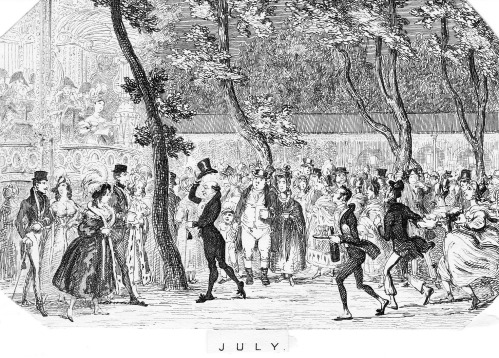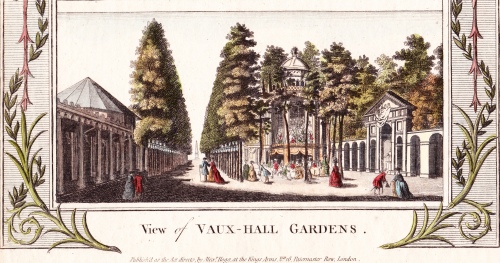
How soon did sightseers arrive on the battlefield of Waterloo? Astonishingly, the answer is, first thing next morning. Some brave – or very foolhardy – gentlemen had ridden out from Brussels while the fighting was still in progress, which might be expected, but Cavalié Mercer, commander of G Troop Royal Horse Artillery, records the first ‘day trippers.’ In his Journal of the Waterloo Campaign, Kept Through the Campaign of 1815, he records how on the morning of the 19th, immediately after the battle, he was surveying the field, helping get water to the wounded and seeing his men were fed. They made a stew of a “quarter of veal, which they had found in a muddy ditch” and ate for the first time in three days, surrounded by mangled corpses and the wounded.
“We had not yet finished our meal, when a carriage drove on the ground from Brussels, the inmates of which, alighting, proceeded to examine the field. As they passed near us, it was amusing to see the horror with which they eyed our frightful figures; they all, however, pulled off their hats and made us low bows. One, a smartly-dressed middle-aged man, in a high cocked-hat, came to our circle, and entered into conversation with me on the events of yesterday. He approached holding a delicately white perfumed handkerchief to his nose; stepping carefully to avoid the bodies (at which he cast fearful glances en passant), to avoid polluting the glossy silken hose that clothed his nether limbs…With a world of bows my man took leave, and proceeded, picking his steps with the same care as he followed the route of his companions in the direction of Hougoumont.”
Residents in Brussels were the first to reach the battlefield, but almost immediately after news of the victory reached London, civilians began to flock to the area. In To The Field of Waterloo  I used the accounts of six visitors in the first year after the fighting to explore why they made the journey and what impressions they carried away with them (along with the souvenirs of battle, poignant, gruesome and glorious.)
I used the accounts of six visitors in the first year after the fighting to explore why they made the journey and what impressions they carried away with them (along with the souvenirs of battle, poignant, gruesome and glorious.)
Charlotte Anne Eaton, novelist and travel writer, was staying with her brother in Brussels before and during the battle and they visited on July 15th. She recorded her impressions in The Days of Battle or Quatre Bras and Waterloo by An Englishwoman. She had to have a very strong stomach to cope with what they found.
“…the road between Waterloo and Brussels was one long uninterrupted charnel-house: the smell the whole way through the forest, was extremely offensive, and in some places scarcely bearable. Deep stagnant pools of red putrid water, mingled with mortal remains, betrayed the spot where the bodies of men and horses had mingled together in death…” Like all the visitors whose accounts I read, her party eagerly scavenged on the battlefield for souvenirs. “In some places patches of corn nearly as high as myself was standing. Amongst them I discovered many a forgotten grave, strewed around with melancholy remnants of military attire. While I loitered behind the rest of the party, searching among the corn for some relics worthy of preservation, I beheld a human hand, almost reduced to a skeleton, outstretched above the ground, as if it had raised itself from the grave. My blood ran cold with horror, and for some moments I stood rooted to the spot, unable to take my eyes from this dreadful object, or to move away: as soon as I recovered myself, I hastened after my companions, who were far before me, and overtook them just as they entered the wood of Hougoumont.”
In Charlotte Eaton’s case her motive seems to be a desire to remember and celebrate the dead. At Hougoumont (below right), where the ashes from the great funeral pyres were still blowing around, she gathered up some of the “sacred ashes”, resolving to give them a reverent burial when she returned home. And, “As we passed through the wood of Hougoumont, I gathered some seeds of the wild broom, with the intention of planting them at H. Park [Hendersyde Park, Roxburghshire, her family home], and with the hope that I should one day see the broom of Hougoumont blooming on the banks of the Tweed.”
Others simply seemed to want to collect whatever they could find in their passion for souvenirs. The local people lost no time in setting up a battlefield tourism industry – and who can blame them, considering the chaos their lives and livelihoods had been thrown into? They scavenged the battlefield for everything from weapons to bits of uniform to the books and letters of the fallen and discovered that the tourists would buy almost anything. Or, help themselves. One significant victim was the ‘Wellington Tree’. John Scott, a journalist, described its significance in Paris Revisited, in 1815, By Way of Brussels: Including A Walk Over the Field of Battle At Waterloo. (Longman, Hurst etc. London. 1816).
“From St. Jean, the road immediately rises up the back of the ridge, on the height and in the front of which, the infantry of the Duke of Wellington’s army was formed in line. The cavalry, at the beginning of the battle, were posted on the St. Jean side of the eminence. The ascent is easy: you reach the top unexpectedly, and the whole field of battle is then at once before the eye. Its sudden burst has the effect of a shock, and few, I believe, are found to put any question for the first five minutes. The point from whence this complete view of the scene, so often pictured in imagination, first presents itself, is one of the most interesting that it includes. It is the summit of the ridge close to the road, over which hangs an old picturesque tree, with a few straggling branches projecting in grotesque shapes from its ragged trunk. The British position extended on the right and left of the road, for the extent of about a mile and three quarters, along the top of a continued line of gentle eminences, immediately confronted by very similar heights, distant from half to three quarters of a mile along which the French army was posted. … The tree, already mentioned, fixed on the bank above the high road from Brussels to Charleroi, denotes the center of, our position, and, the Duke of Wellington having been near it the greater part of the day, it goes by the name of the “Wellington tree.” I found it much shattered with balls, both grape and musket; all of which had been picked out by visitors. Its branches and trunk were terribly splintered. It still retained, however, the vitality of its growth, and will, probably, for many future years, be the first saluting sign to our children and our children’s children, who, with feelings of a sacred cast, come to gaze on this theatre of their ancestors’ deeds.”
But the tree was not to survive for long. The party with schoolmaster John Evans, author of An Excursion to Windsor in 1810…to which is annexed A Journal of a Trip to Paris in the Autumn of 1816, by Way of Ostend, Bruges, Ghent, Antwerp, Brussels and Waterloo. (Sherwood, Neely and Jones. London 1817) showed far less respect for the tree as a symbol than Scott did. “…we came in sight of WELLINGTON TREE, situated on a rising ground to the left of the road [seen from the south]. I took a Sketch of it, and some of my companions a bough or two. The bough immediately over the place where THE DUKE had stood, still bore the mark of a cannon-shot! This bough fell under the axe of an Irish officer in our party.” Charlotte Eaton, returning to the battlefield for a second time, records the end of the tree. “*Footnote: It is on the left of the road in going towards Waterloo, behind the farmhouse of la Haye Sainte. But this tree, which ought to have been for ever sacred, has been CUT DOWN!!!”
Below is a picture of La Belle Alliance, drawn on June 25th. It became a virtual tourist centre, stuffed with items to buy and with guides, both locals and military, to take visitors over the battlefield.
My other tourists were a young man on a spree with his friends, a lawyer and friend of Sir Walter Scott and Robert Southey, the Poet Laureate. They all had their own motives for visiting and each account recounts different emotions and reactions to what they found. Perhaps the remarks that moved me most were those of John Scott, searching for – and finding – hope in the shattered, trampled, bloody ground where, somehow, flowers were managing to bloom.











